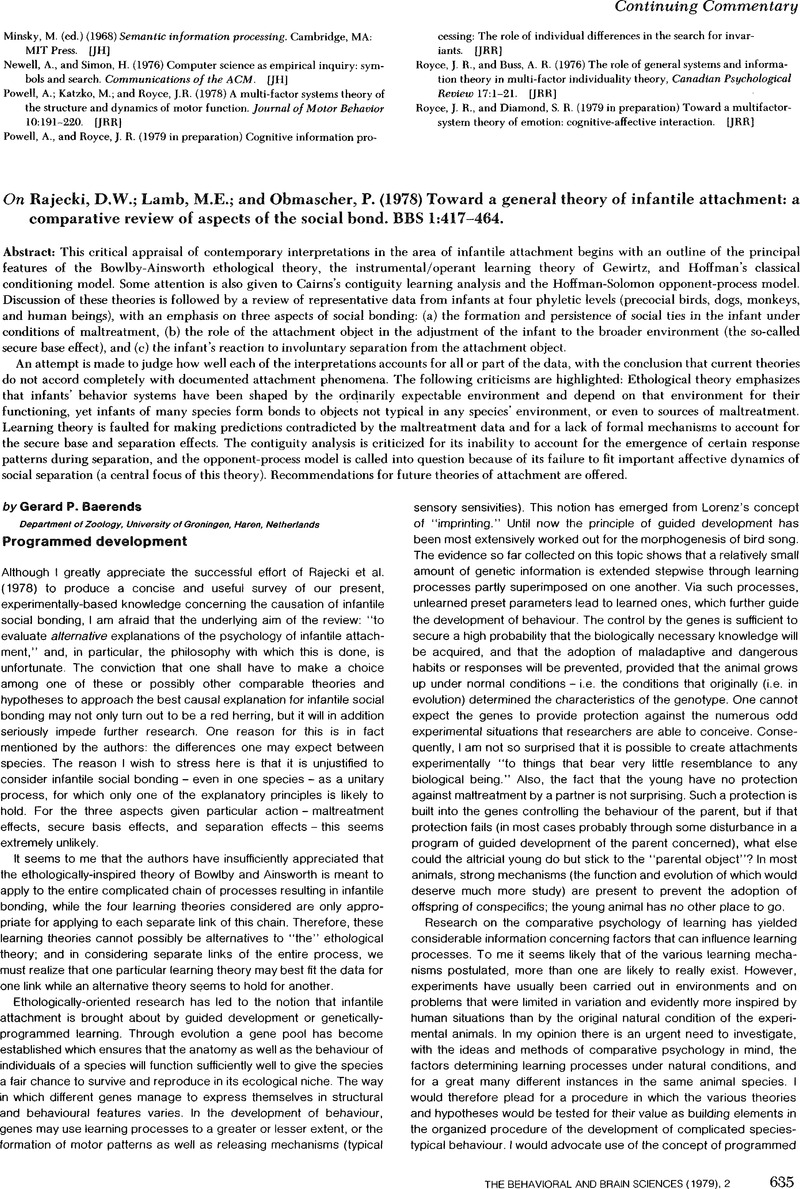Lewis, M., and
Ban, P. (
1971)
Stability of attachment behavior: A transformational analysis. Paper presented at the Society for Research in Child Development meetings, Symposium on Attachment: Studies in Stability and Change, Minneapolis. [ML]
Google Scholar 